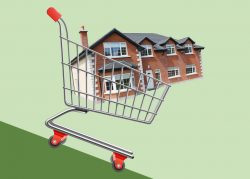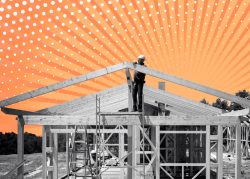Despite the global pandemic, or perhaps because of it, home sales clocked their best year since 2006.
The annual pace of existing home sales in December increased to 6.76 million, seasonally adjusted, up 0.7 percent from November and 22 percent year-over-year, according to the National Association of Realtors’ monthly report.
It was a strong finish to a year that saw 5.64 million existing homes change hands, up 5.6 percent from 2019 to the highest level since 2006. Residential construction also posted the busiest year since 2006, though homebuilder confidence has begun to wane over the past two months despite record low levels of housing inventory.
Read more



The supply of existing homes for sale hit another historic low with 1.07 million units on the market. At the current sales pace, those homes will be sold within 1.9 months. Seventy percent of homes sold in December were listed for less than a month.
The median home price closed the year at $309,800, up nearly 13 percent from a year earlier, and marking the 106th month of consecutive price increases.
“The tight resale market has been good for the new home market, which like the resale market is also benefiting from demographic shifts and low mortgage interest rates,” said RCLCO Real Estate Advisors’ Gregg Logan. “For many home buyers the pandemic has created economic and lifestyle changes that have influenced people to make moves.”
Lawrence Yun, NAR’s chief economist said he expects December’s momentum will carry into 2021, despite mortgage rates creeping up.
“Although mortgage rates are projected to increase, they will continue to hover near record lows at around 3%,” Yun predicted. “Expect economic conditions to improve with additional stimulus forthcoming and vaccine distribution already underway.”
Other experts are expressing concern that demand will ebb if prices continue to rise.
Joel Kan, head of industry forecasting at the Mortgage Bankers Association, noted in a statement Friday that “disproportionate” growth in higher tiers of the housing market could slow demand.
“More acute affordability challenges will emerge if inventory stays this tight and home-price growth continues to accelerate.” Kan said. “This in turn would be especially challenging for first-time homebuyers, who make up a third of all home sales.”
Similar concerns were expressed more broadly last year as lenders tightened borrowing criteria, locking non-affluent buyers out of the market.
There have been some indications of homebuyers pulling back. Pending home sales, an indicator of future sales, dropped month-over-month in September, October and November. Existing sales fell in November, the first time since June that sales didn’t grow month-over-month. But sales were still up nearly 26 percent compared to November 2019.
